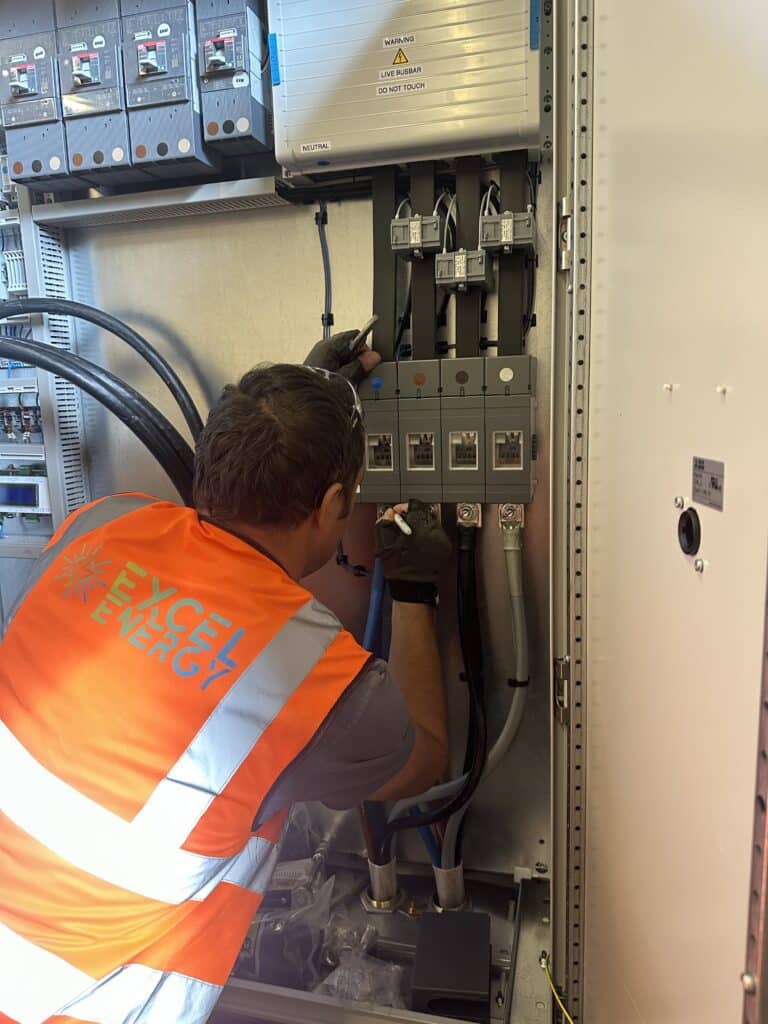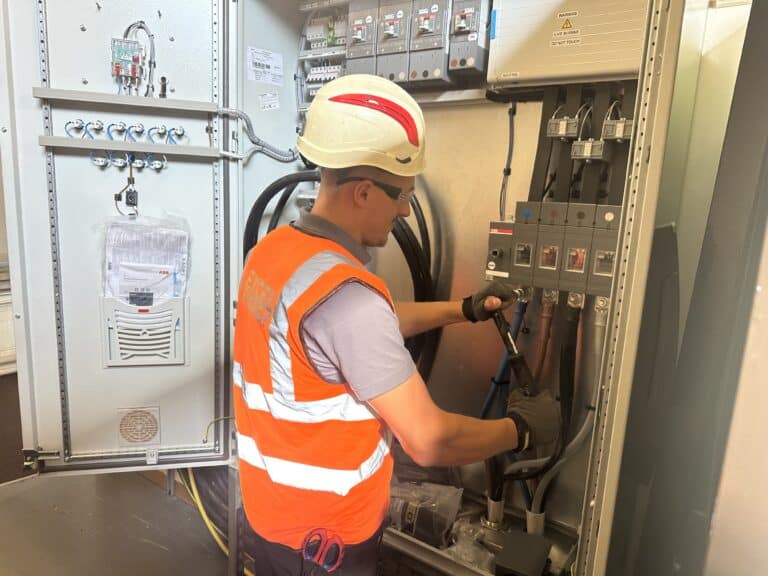The Solar 120% Rule and Busbar Ratings in UK Commercial Solar Installations
The solar 120 rule is an important guideline in UK commercial solar installations, shaping how systems are designed and approved. Together with busbar ratings, it ensures safe, efficient, and compliant connections. This article explains what these terms mean, why they matter, and how they impact commercial solar projects.
What Exactly Is the Solar 120% Rule?
The 120% rule is an electrical code guideline from the US National Electrical Code (NEC). It states that a solar PV system can connect to a distribution panel, as long as the total current from both the grid and the solar system does not exceed 120% of the panel’s busbar rating.
For example, if a panel has a 200-amp busbar rating, the maximum safe load it can handle, including both utility supply and solar backfeed, is 240 amps (200 x 120%).
Although the NEC is from the United States, the principle is still used in the UK solar industry. It acts as a safety margin to help prevent overheating and electrical faults.

Why It Still Matters in the UK
In the UK, regulations follow the IET Wiring Regulations (BS 7671), Distribution Network Operator (DNO) requirements, and G99/G100 standards for grid connections. Although the 120% rule is not explicitly stated in UK law, its main idea of limiting electrical load to protect equipment is still important.
Commercial buildings usually have electrical distribution panel boards that were not designed for commercial solar panels. The 120% rule offers a useful way to determine if solar PV can be added safely without replacing the entire switchboard.
The Impact on System Size and Design
The 120% rule can affect the size of a commercial solar installation. If your current distribution board or main panel is near its busbar limit, solar exports may exceed the 120% threshold.
This can:



In summary, the rule stops oversizing while keeping the solar pv system within safe electrical limits.

Solutions If You Hit the solar 120 rule Limit
If your solar project encounters the 120% restriction, it doesn’t mean it’s over. There are several design solutions available:
Panel Upgrades: You can replace the existing distribution board with one that has a higher busbar rating.
Panel Upgrades: You can replace the existing distribution board with one that has a higher busbar rating.
Load Shifting: You can add battery energy storage systems (BESS) to lower peak export and balance demand.
Multiple Points of Connection: You can split the PV connection across several panels to distribute the current.
Install G99/G100 monitoring equipment able to ram down inverter generation when maximum power exceeds buzz bar rating.
In commercial solar projects, these strategies often mix based on budget, grid connection rules, and building layout.
Why It’s Relevant for UK Commercial Solar Systems
For UK businesses, solar PV means long-term savings, less reliance on the grid, and meeting sustainability goals. However, safety compliance is essential.
The 120% rule is important in discussions with engineers, installers, and DNOs because:



By following this principle, installers can design systems that are both cost-effective and compliant.
Common Misconceptions About the 120% Rule
1. “It doesn’t apply in the UK.”
While not a legal requirement, the principle is widely referenced in design practice.
2. “It limits solar adoption.”
Not true. It simply guides safe integration alternative connection methods usually exist.
3. It’s outdated.
Electrical loading rules evolve, but conservative safety margins are never irrelevant.
FAQs: The Solar 120% Rule in a UK Context
Is the 120% rule UK mandatory?
No, but adherence to IET BS 7671 (IET Wiring Regulations) is effectively mandatory for electrical installations in the UK. The principle of not exceeding safe busbar capacity is enforced under UK wiring and grid standards.
Can my commercial building exceed the 120% rule?
Yes, if you redesign with supply-side connections, larger panels, or battery storage, but not by overloading the mains existing infrastructure equipment.
Who decides if my system complies?
Ultimately, your installer and the DNO must sign off designs before commissioning.
Does this apply to domestic systems too?
Yes, though the issue is more pronounced in commercial setups due to higher demand and larger commercial PV arrays.
What Busbar Ratings Are and Why They Matter
A busbar is a copper metal strip or bar housed inside electrical switchgear, panels, and distribution boards. It acts as a central rail connection for power, distributing electricity to different circuits or devices.
Key Busbar Ratings:
Current Rating (Ampacity): Maximum continuous current (in amps) it can safely carry.
Voltage Rating: The maximum voltage it can withstand.
Short-Time Current Rating: Maximum current it can handle briefly during a fault.
Frequency: The AC frequency (50 Hz in the UK).
What Busbars Are Used For:



Why Ratings Are Important:



In solar projects, choosing the right busbar rating is critical to ensure the system can handle both grid supply and renewable backfeed without risk.
For commercial solar installations in the UK, the 120% rule and busbar ratings are important design factors. They determine system size, influence costs, and ensure safety standards are met.
Overlooking these elements can result in undersized systems, expensive rework, or electrical hazards. By partnering with experienced installers who know these rules, UK businesses can fully benefit from solar, maximising their return on investment while remaining safe, reliable, and prepared for the future.
Investing in commercial solar goes beyond cutting energy bills; it secures a safe, reliable, and sustainable energy source for your business.
At Excel Energy, with a background in electrical engineering in we offer complete turnkey commercial solar PV installation services throughout the UK. We handle everything, from consultation and system design to installation, monitoring, and ongoing maintenance. We are accredited by NAPIT, MCS, RECC, Flexi-Orb, and TrustMark, and certified to ISO 9001, ISO 14001, BS7671, and ISO 45001. This ensures every system we install is efficient, durable, and tailored to your business’s needs.
Take control of your energy today. Contact Excel Energy to discuss your commercial solar installation and start saving while improving sustainability.
